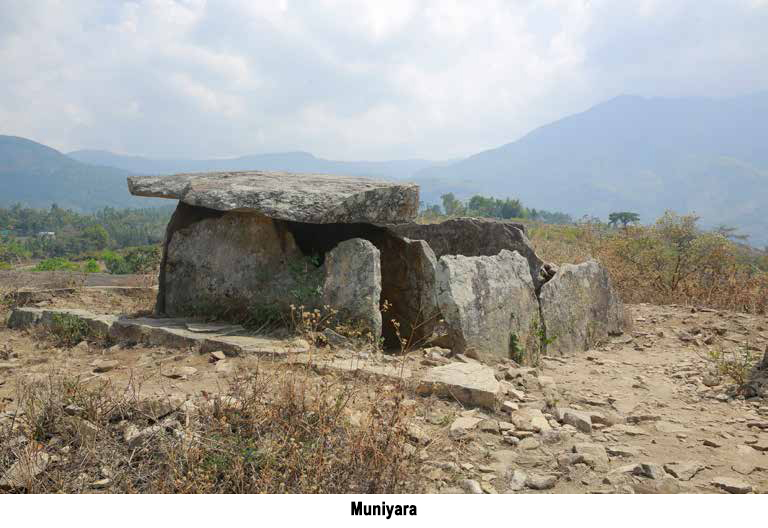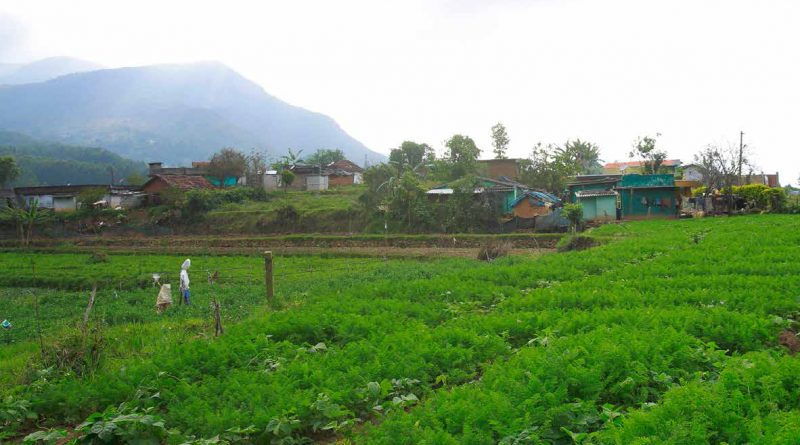“Kantha . . .Ithu Nalla Ooru”
-K. Rupeshkumar
“O Beloved! What a lovely village!” It seems Sita Devi said so to Lord Rama, at some point of time during their life in exile in the forest. That was how the name ‘Kanthalloor’ came into being – the first story that visitors hear on reaching this ooru [village]. I heard it fourteen years back. As I set out to find the origins of this story, I heard more stories. During the time of invasion, people from villages in Tamil Nadu fled for their lives, migrated, crossed forests, climbed up and down hills, and finally reached this land. Those who survived the ordeal held their naked palms above a lighted wick on a stone lamp, and took a pledge. “From now onwards, we abandon all kinds of differences. Of caste and of religion, of kings, feudal lords and tenants. Hereafter, there will be only one caste in this land.” They decided to live a secure life in five oorus – Marayoor, Kanthalloor, Keezhanthoor, Karayoor and Kottakkuzhi. Whenever I come to Kanthalloor, that breeze seeks me out in the twilight hours . . . the same breeze that caressed those people as they held their palms above the bud of flame, and took an oath to resist differences of caste and religion, to build a single human community . . . the same breeze that wafted over Sita Devi as she whispered sweet nothings into her lord’s ears and muttered, “Kantha . . . ithu nalla ooru!” Today that breeze carries new fragrances . . . of apples, oranges, strawberries, blackberries, plums . . . and seems eager to sing, “The breeze of this land is the real one!” Kanthalloor, whose soil yields cabbage, carrot, cauliflower, beans and potatoes . . .
Kanthalloor, whose vast fields have gone dry, the last drops of underground water having been sucked out by the deep roots of Eucalyptus grandis . . . Now, people are battling hard to wrap a green blanket over the land . . . Villagers, who accord greater value to the verdict of the orrukootams [tribal governing bodies] than that of the highest court in the land . . . Temple festivals that pulsate with songs, dances and ululations, as devotees, bearing ammankudams [pots with offerings to Amman, the Divine Mother] on their heads,sway to the heady tunes . . . Elephants, the children of the Sahya mountains, that come racing down every evening, swaying their heads, trumpeting . . . Cataracts that spray water drops and spread beauty all over Keezhanthoor and Irachilpara . . . The viewpoint that offers bewitchingly beauteous pictures of Nature, captured in lens frames for the film “Bhramaram” . . . now known by the name of the film that immortalized its magnificence . . . the Bhramaramviewpoint . . . Pattissery dam, Mannavanchola National Park which holds rare plants and trees, Pius Nagar with its dolmens as old as time . . . natural rocky outcrops imprinted by the footsteps of Bhima the Pandava . . . the strong fragrance of processed lemon grass oil . . . Kanthalloor that bestows fascinating pictures from any angle to the eye of the camera lens . . . Kanthalloor with her luscious apples . . . Kanthalloor with her vast strawberry fields that splash vibrant colours . . . Kanthalloor that allures with her tantalizing, round and ripe oranges . . . Scenes of cold season vegetables ready for picking . . . Who was it that first named Kanthalloor the fruit bowl of Kerala? Kanthalloor with her psychedelic riot of butterflies . . . Kanthalloor with her endless tunes and rhythms of songbirds . . . It was in 2014 that the first meeting of Responsible Tourism was held at Kanthalloor.
This was followed by many others. By the end of 2017, Kanthalloor was included in the PEPPER (People’s Participation for Participatory Planning and Empowerment through Responsible Tourism) Project that was part of the Public Participation Tourism Development. A special tourism grama sabha came into being, meetings of interested entrepreneurs took place, studies on various subjects were conducted . . . tourism resource mapping, resource directory, various training programmes, packages . . . everything went on like clockwork until disaster struck in the form of COVID, and all the well-laid plans went awry . . . Eventually, when the pandemic subsided, Kanthalloor was included in the STREET (Sustainable Tangible Responsible Experiential Ethnic Tourism) Project. Thereafter, there was no looking back. With Responsible Tourism Mission becoming one of the technical support agencies of the UNDPIHRML (United Nations Development Programme – Indian High Range Mountain Landscape) project, Kanthalloor witnessed the implementation of the RT protocol. Mohan Das, the President of the vibrant panchayat governing council, correctly identified tourism as Kanthalloor’s most viable path towards growth and progress. Special thrust was given to tourism associated with agricultural sector. It was Mohan Das himself and the panchayat governing council that initiated the surge of developmental plans for Kanthalloor through the RT-STREET Project. The panchayat committee took up the request made by RT Mission in order to make Kanthalloor a Green Tourism Destination under the Green STREET scheme. Many things came to the village – control on plastic use, green arch, green check post, water ATMs, CCTV cameras, cloth bags . . . Panchayat- and police- approved Green Tourism identity stickers on vehicles transporting tourists. . . Kanthalloor is fast becoming a safe destination for tourists. Fruit- and vegetable streets allow people to walk along fields and purchase the produce. Plans for flower- and food streets are on the anvil . . . people can now enjoy varied tastes on their palate, inhale fresh fragrances, see rose shrubs being cultivated, marigolds blooming, jacarandas spreading their violet glory . . .Kanthalloor is on the way to becoming a Tourism Village, embracing all the goodness that RT STREET Projects can offer . . . Won’t you drop in onKanthalloor to get soaked in her gentle drizzle that comes visiting frequently? Do come . . . Kanthalloor invites you . . .


